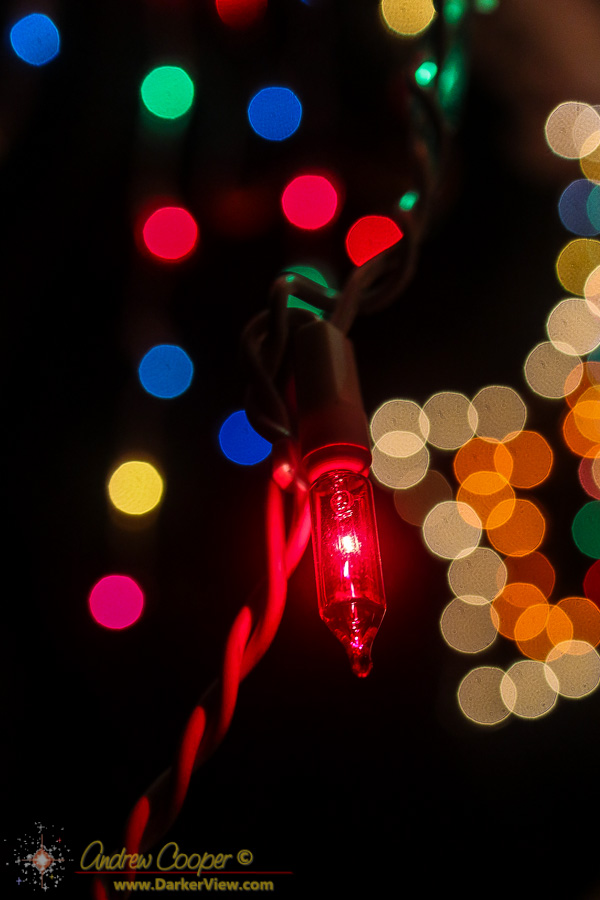
Tag: light
A Night in the Meadow
This little meadow is is only a couple acres. Along one side is a spring where crisp water seeps from the ground and marks the beginning of a creek. Along the top the last few hundred feet of the paved road ends at a junction of rougher roads that lead further into the forest.
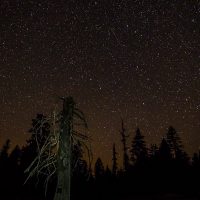
The clearing is surrounded by seventy foot high trees. Pine, fir, and larch are all represented in the dense forest that covers much of the ridgeline. This limits the view, blocking objects low on any horizon. The tall trees also provide a stage above which the stars rise and set, sometimes blinking brightly as they pass behind branches.
There are simply no lights, no substantial civilization for fifty miles in any direction. There are no distant domes of light visible on the horizon to remind one of Edison’s terrible invention. There is just the darkness and the stars above.
Christmas Lights
Sodium Light
The golden yellow glow that has dominated the night for generations is disappearing.
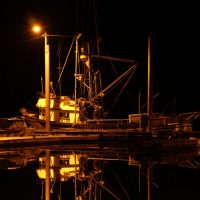
The yellow glow of sodium light has been both celebrated and reviled. While the glow can be attractive in night scenery it also creates inhuman tones in faces and photos of people. Movies have been shot under sodium lights, songs reference the golden glow. Astronomers both professional and amateur prefer the lights as the light can be easily filtered from view.
Changing a Light Bulb
How many engineers does it take to change a light bulb?

This is one of those times. A nightlog coded as critical, the Keck 2 adaptive optics system has a slight problem, no output from the white light source, no calibrations, no science. Waiting until after 9am I call the support crew on the summit… Do you know how? No. I wrestle with the thought for a few moments. No avoiding it, I need to drive to the summit.
So how many engineers does it take to change a light bulb?
The Sola Photo 800 Dive Light
Once you descend below a few feet underwater photographs begin to be all greens and blue. The reason is that water absorbs the red light, leaving a very skewed color balance in the images. Thus bringing a light source with you becomes important to allow the underwater world to be seen in vivid color.
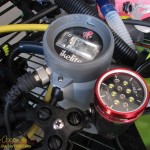
Enter the Sola Photo 800 by Light and Motion… The Sola offers a nice flood with an even field of illumination for video. Several of my dive buddies use Sola lights, Thus I have had a chance to check out the lights firsthand before putting down a few hundred dollars. I was particularly noting the build quality and the control setup, both are excellent. With dozens of dives on the lights they still work well. Perhaps I should consider one of these little units?
There are several models available, but it is the photo version I was looking at. The light provides 800 lumens of white in an evenly illuminated, large field. The photo version also offers a red mode for framing and focusing that purportedly does not change the behavior of the subject. Deep red light is not seen by many marine critters as there is little to no red light at depth to be seen.
A coincidence of decent sales on the Sola lights occurring on my birthday resulted in a package appearing on my lanai. I ordered light with both the hand grip mount and with a ball mount that will allow attachment to my camera rigs.
Celebrating Dark Skies
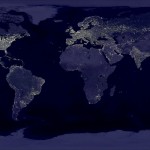
So often I talk to visitors who come from places where they might see a mere handful of stars. To live in or worse, to grow up in a major metropolitan area, is to lose the beauty that is our night sky. To lose the view of our universe is to reduce that vast universe to just our everyday world. You lose the imagination and sense of wonder that can change everything.
Maybe I am weird, I make a point to get out and spend nights under a dark sky. With a telescope I pass the night looking into the vastness of space. With that experience comes a broader understanding of the scale of our universe and our place within it. To see the galaxies, to know what they are, to gain a glimmer of understanding, it changes your view of who and what we are.
To me this is precious.
Light pollution may be an issue few understand. It has many consequences… Vast amounts of wasted energy and money, impacts on our health and the health of our natural environment. There are many reasons to minimize the impact of artificial lighting. Of these reasons, it is the loss of the starry night sky that can sever our connection to the universe.
This week is International Dark Skies Week. Take a moment to look up at the night sky and understand what you may have have lost.
The Magnificent Night Sky: How to Protect It from Keck Observatory on Vimeo.
Zodiacal Light
A strange glow visible long after sunset, or well before dawn, along the path of the Sun in the sky. Called the “False Dawn” by Muhammad in Islamic texts and by other classical sources, this glow is often confused with the light of dawn, or simply overlooked by many.
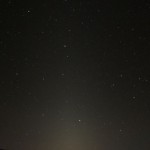
The answer is simply dust.
Space is not only very big and mostly empty, it can also be dirty. Dust from comets, dust from asteroid collisions, dust floating in orbit about the Sun, reflecting sunlight and glowing across the sky. Because this dust lies in the plane of the solar system the glow is visible as a band along the ecliptic and through the constellations of the zodiac. The dust is thickest, and the glow brightest nearer the Sun, thus the glowing dust is best seen when the Sun is just out of sight, after dusk, or before dawn. The light is simply reflected light. Looking at the spectrum of the zodiacal light shows it to be sunlight, with the same spectral features.
The zodiacal light can be quite bright, clearly visible to any who look in the hour after dusk, or before dawn. It can be bright enough to be a nuisance to amateur astronomers attempting to view through their telescopes. At the same time it is a sign of clear dark skies, as it is otherwise hidden by the glow of artificial light. The slightest amount of moonlight or light pollution and this glow disappears from sight.
The effect can be seen completely across the sky, along the ecliptic, as a very faint glowing band when viewed from the darkest of places. Directly opposite the Sun in the sky is a brighter spot in the glow, the gegenschein or counterglow. A form of glory, the dust reflects sunlight back in the direction it came.
The zodiacal band and the gegenschein are both visible from Mauna Kea on a dark night. From this dark place the most subtle of astronomical spectacles can be appreciated.
